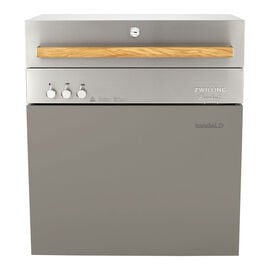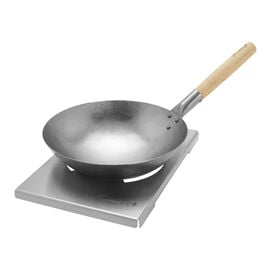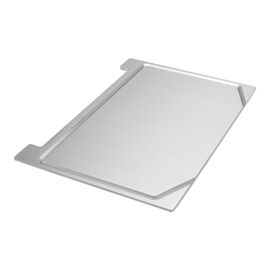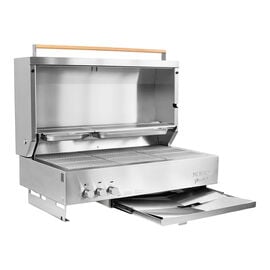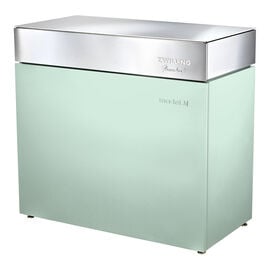“Dusted” trout with eggplant
Jump To :

4 SERVINGS

PREP TIME: 15-20 MIN.

COOK TIME 12-15 MIN.
INGREDIENTS
Ingredients
- 1 tsp coarse salt
- 1 tbsp onion powder
- 1 tbsp dried thyme
- 1 pinch of cinnamon powder
- ½ tsp ground coriander seeds
- 1.5 oz Mediterranean herbs
- 4 trout, 14-17.5 oz each
- 4 tbsp olive oil
More
- 2 eggplants
- Salt
- 2 tbsp olive oil
- 1 garlic clove
- 1 onion
- ½ bunch flat-leaf parsley
- 5.3 oz cocktail vine tomatoes
Burner setting
- LEFT: Low
- MIDDLE: Medium
- RIGHT: Medium
Equipment Needed
- Teppanyaki Plate
- Mortar and Pestle
HOW TO MAKE IT
Directions
- Remove the grill grate above the roasting zone and insert the teppanyaki plate. Ignite the roasting burners on the main grill surface and preheat the grill on high heat (430-445°F). Finely grind the spices together in a mortar. Rinse and dry the herbs.
- Rub the trout with olive oil. Then sprinkle them inside and out with 2/3 of the seasoning mixture and stuff the herbs into each trout. Clean the eggplants and cut into ¼-inch thickness. Then season with salt and drizzle with olive oil.
- Place the trout on the main grill surface and grill with the lid closed for 10-12 minutes. Halfway through grilling, flip them over and cook until the core temperature reaches 143-147°F.
- Peel and finely dice the garlic and onion. Rinse and spin dry the parsley. Clean and halve the tomatoes. Switch the roasting zone to the lowest level and preheat the teppanyaki grill plate for 1-2 minutes.
- Spread the eggplant slices on the teppanyaki plate and grill for 4-6 minutes.
- Flip them once. Halfway through the grilling time, sprinkle them with the diced onion and garlic, parsley and tomato halves and continue grilling. Finally, sprinkle them with the remaining seasoning mixture and serve with the trout.
Tip:
There are two reasons for cutting the trout. In the case of very fresh fish, this prevents the fibers from curling or tearing in the high heat. It also ensures they cook more evenly, as the back filet is significantly thicker than the belly filet.


